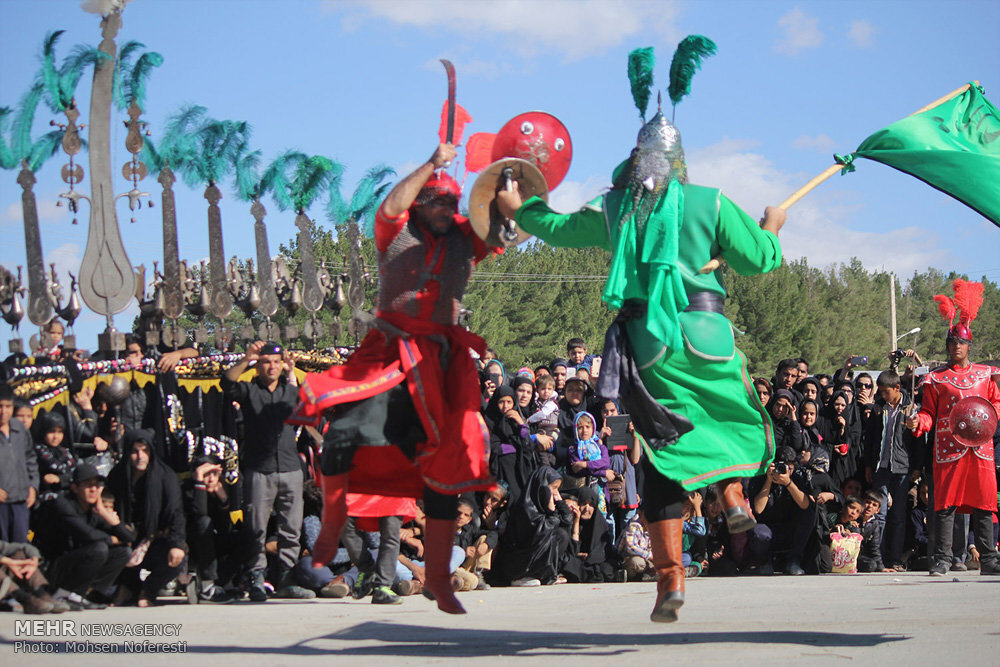Rey to host online meeting on tazieh

TEHRAN- The ancient city of Rey will be hosting a virtual meeting on tazieh, Iranian passion play, on the occasion of the lunar month of Muharram (starting Friday) in which Shia Muslims commemorate the martyrdom anniversary of Imam Hussein (AS).
The Cultural Heritage, Tourism, and Handicrafts Department of Rey is scheduled to host on online meeting on tazieh in the near future, in which various aspects of the religious dramatic art will be discussed, CHTN reported.
Tazieh represents religious events, historical and mythical stories and folk tales. Each performance has the four components of poetry, music, song, and motion. However, stories about the uprising of Imam Hussein (AS) and his companions against the oppressive Umayyad dynasty in 680 CE are more highly regarded by tazieh troupes and audiences.
As Rey is considered a religious center in the southeast of Tehran, tazieh has been performed in this city for a long time every year, and the meeting will discuss the history of tazieh performances as well as boost the religious tourism in the region, Rey's cultural heritage department director Amir Mosayeb Rahimzadeh said on Wednesday.
Tazieh, which has a long history in Iran, was registered on UNESCO’s List of the Intangible Cultural Heritage of Humanity in November 2010.
Iranians, who are mostly Shia Muslims, hold special ceremonies during the first ten days of the lunar month of Muharram to commemorate the martyrdom anniversary of Imam Hussein (AS), the grandson of Prophet Muhammad (PBUH) and his 72 loyal companions, including Tazieh, Sineh-Zani [beating the chest] and Nazri, food offerings during Muharram in every village, township, city or metropolis, which are usually sponsored by wealthy benefactors.
Rey was one of the capital cities of the Parthian empire (3rd century BC–3rd century CE) and it was captured by the Muslim Arabs in 641 CE. During the reign of the Muslim caliph al-Mahdi in the 8th century, the city grew in importance until it was rivaled in western Asia only by Damascus and Baghdad.
According to Encyclopedia Britannica, Islamic writers described it as a city of extraordinary beauty, built largely of fired brick and brilliantly ornamented with blue faience (glazed earthenware).
It continued to be an important city and was briefly a capital under the rule of the Seljuqs, but in the 12th century, it was weakened by the fierce quarrels of rival religious sects.
In 1220 the city was almost entirely destroyed by the Mongols, and its inhabitants were massacred. Most of the survivors of the massacre moved to nearby Tehran, and the deserted remnants of Rey soon fell into complete ruin.
ABU/MG
Leave a Comment